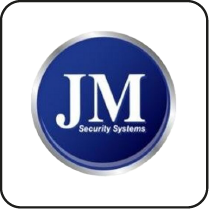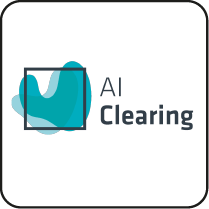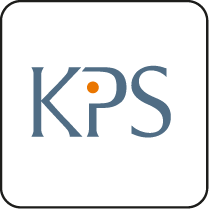Continual Improvement Strategies in ISO 14001
Fundamental Principles of Continual Improvement in ISO 14001
Continual improvement in ISO 14001 focuses on enhancing environmental performance through iterative processes. It involves setting objectives, implementing actions, monitoring results, and making necessary adjustments. This aligns with the Plan-Do-Check-Act (PDCA) cycle, ensuring systematic progress.
Alignment with ISO 14001 Objectives
Continual improvement is integral to ISO 14001’s objectives, which include reducing environmental impacts, complying with legal requirements, and achieving sustainability goals. By fostering a culture of continuous enhancement, organisations can better meet these objectives and demonstrate their commitment to environmental stewardship (Clause 10.3).
Benefits of Implementing Continual Improvement Strategies
Implementing continual improvement strategies offers several benefits:
- Enhanced Environmental Performance: Regularly improving processes leads to reduced waste, lower emissions, and efficient resource use.
- Regulatory Compliance: Staying ahead of regulatory changes ensures compliance and reduces the risk of penalties.
- Cost Savings: Efficient resource use and waste reduction can result in significant cost savings.
- Stakeholder Trust: Demonstrating commitment to continual improvement builds trust with stakeholders, including customers and regulators.
Contribution to Environmental Performance
Continual improvement directly contributes to environmental performance by identifying inefficiencies and implementing corrective actions. This proactive approach ensures that environmental objectives are met and exceeded, fostering a culture of sustainability (Clause 10.2).
Introducing ISMS.online
ISMS.online is a powerful platform that supports organisations in their ISO 14001 journey. With features like Asset Management, Risk Management, and Audits & Reviews, it streamlines the implementation and maintenance of an Environmental Management System (EMS). ISMS.online's Virtual Coach provides step-by-step guidance, ensuring compliance and facilitating continual improvement. By using ISMS.online, organisations can efficiently manage their EMS, achieve certification, and drive sustainable practices.
Book a demoUnderstanding the PDCA Cycle
What is the PDCA Cycle and How is it Applied in ISO 14001?
The PDCA cycle, also known as the Plan-Do-Check-Act cycle, is a four-step management method used for the control and continual improvement of processes and products. In ISO 14001, it serves as the backbone for implementing and maintaining an effective Environmental Management System (EMS). The cycle ensures that environmental objectives are systematically planned, executed, monitored, and refined.
How Each Phase of the PDCA Cycle Contributes to Continual Improvement
Plan
In the planning phase, organisations identify environmental aspects, set objectives, and establish processes necessary to deliver results in accordance with the environmental policy. This phase involves risk assessment, compliance obligations, and setting measurable targets (Clause 6.1).
Do
The implementation phase involves executing the planned processes. This includes training employees, allocating resources, and implementing operational controls to manage significant environmental aspects (Clause 8.1).
Check
Monitoring and measurement activities are conducted to track performance against environmental objectives. This phase includes internal audits and evaluations of compliance with legal and other requirements (Clause 9.1).
Act
Based on the results of the checking phase, organisations take corrective actions to address nonconformities and opportunities for improvement. This phase ensures that the EMS is continually improved to enhance environmental performance (Clause 10.2).
Key Activities Involved in Each Phase of the PDCA Cycle
- Plan: Identifying environmental aspects, setting objectives, risk assessment, compliance planning.
- Do: Implementing processes, training, resource allocation, operational control.
- Check: Monitoring, measuring, internal audits, compliance evaluation.
- Act: Corrective actions, management reviews, continual improvement initiatives.
Effective Implementation of the PDCA Cycle
Organisations can effectively implement the PDCA cycle by integrating it into their daily operations and decision-making processes. Utilising tools like ISMS.online can streamline this integration by providing features for risk management, compliance tracking, and performance monitoring. This ensures that the PDCA cycle is not just a theoretical framework but a practical approach to achieving continual improvement in environmental performance.

An 81% Headstart from day one
We’ve done the hard work for you, giving you an 81% Headstart from the moment you log on. All you have to do is fill in the blanks.

Identifying and Evaluating Environmental Aspects
What Are Environmental Aspects and Why Are They Important in ISO 14001?
Environmental aspects are elements of an organisation’s activities, products, or services that interact with the environment. Identifying these aspects is essential in ISO 14001 as they form the foundation for understanding and managing environmental impacts (Clause 6.1.2). By recognising significant aspects, organisations can prioritise efforts to mitigate negative effects and enhance positive outcomes.
How Can Organisations Identify Significant Environmental Aspects?
Organisations can identify significant environmental aspects through systematic processes such as environmental reviews, audits, and stakeholder consultations. Tools like ISMS.online facilitate this by providing structured frameworks and real-time data tracking. Key steps include mapping activities, assessing resource use, and evaluating emissions and waste generation.
What Methods Can Be Used to Evaluate the Impact of Environmental Aspects?
Evaluating the impact of environmental aspects involves qualitative and quantitative methods. Techniques such as lifecycle assessments, risk assessments, and impact matrices help determine the significance of each aspect. ISMS.online’s risk management features support this evaluation by linking aspects to compliance obligations and performance metrics, ensuring a comprehensive analysis (Clause 6.1.4).
How Does the Evaluation of Environmental Aspects Drive Continual Improvement?
The evaluation of environmental aspects drives continual improvement by highlighting areas for enhancement and corrective actions. By regularly assessing and updating environmental aspects, organisations can adapt to changing conditions, improve resource efficiency, and reduce environmental impacts. This proactive approach aligns with the PDCA cycle, fostering a culture of sustainability and compliance (Clause 10.2).
Setting and Reviewing Environmental Objectives
Criteria for Setting Effective Environmental Objectives
Effective environmental objectives should be SMART: Specific, Measurable, Achievable, Relevant, and Time-bound. Objectives must align with the organisation’s environmental policy, address significant environmental aspects, and comply with legal and other requirements (Clause 6.2.1). They should also consider technological options, financial, operational, and business requirements, and the views of interested parties.
Aligning Objectives with ISO 14001 Requirements
To ensure alignment with ISO 14001, objectives should be consistent with the environmental policy and contribute to the achievement of intended outcomes, including enhancing environmental performance and fulfilling compliance obligations (Clause 6.2.1). Utilising tools like ISMS.online can streamline this process by providing templates and frameworks that ensure objectives are comprehensive and aligned with ISO 14001 standards.
Reviewing and Updating Environmental Objectives
The review and update process involves regular monitoring and evaluation of progress towards objectives. This includes internal audits, management reviews, and performance evaluations (Clause 9.3). Organisations should use data from these evaluations to identify areas for improvement and adjust objectives accordingly. ISMS.online’s performance monitoring features can facilitate this by providing real-time data and automated reports.
Supporting Continual Improvement
Environmental objectives support continual improvement by providing clear targets for enhancing environmental performance. By regularly reviewing and updating these objectives, organisations can adapt to changing conditions, incorporate new technologies, and address emerging environmental issues. This proactive approach ensures ongoing compliance and drives sustainable practices, fostering a culture of continual improvement (Clause 10.3).

Free yourself from a mountain of spreadsheets
Embed, expand and scale your compliance, without the mess. IO gives you the resilience and confidence to grow securely.

Implementing Corrective and Preventive Actions
Corrective and Preventive Actions in ISO 14001
Corrective and preventive actions are integral to ISO 14001. Corrective actions address nonconformities by eliminating their causes to prevent recurrence, while preventive actions aim to identify and mitigate potential nonconformities before they occur (Clause 10.2).
Identifying the Need for Corrective and Preventive Actions
Organisations can identify the need for these actions through internal audits, management reviews, and monitoring environmental performance. Nonconformities, customer complaints, and regulatory changes also signal the need for corrective and preventive measures. ISMS.online facilitates this process by providing real-time data tracking and automated alerts for potential issues.
Steps Involved in Implementing Corrective and Preventive Actions
- Identification: Recognise nonconformities or potential issues through audits, reviews, or performance monitoring.
- Root Cause Analysis: Determine the underlying causes of the identified issues.
- Action Planning: Develop a plan to address the root causes, including specific actions, responsibilities, and timelines.
- Implementation: Execute the planned actions, ensuring all stakeholders are informed and involved.
- Monitoring and Review: Track the effectiveness of the actions taken and make adjustments as necessary.
ISMS.online supports these steps with features like workflow assignment, deadline tracking, and progress monitoring, ensuring a systematic approach to corrective and preventive actions.
Contribution to Continual Improvement
Corrective and preventive actions drive continual improvement by addressing both existing and potential issues, ensuring that the Environmental Management System (EMS) remains effective and compliant. By proactively managing nonconformities and potential risks, organisations can enhance their environmental performance, reduce waste, and improve resource efficiency. This aligns with the PDCA cycle, fostering a culture of sustainability and compliance (Clause 10.3).
Conducting Internal Audits
Purpose of Internal Audits in ISO 14001
Internal audits evaluate the effectiveness of an Environmental Management System (EMS). They ensure compliance with ISO 14001 requirements, identify areas for improvement, and verify that environmental objectives are met. Internal audits help organisations maintain regulatory compliance, enhance environmental performance, and foster a culture of continual improvement (Clause 9.2).
Planning and Conducting Effective Internal Audits
Effective internal audits require meticulous planning. Organisations should develop an audit programme outlining the scope, frequency, and methods of audits. This includes selecting competent auditors, defining audit criteria, and scheduling audits at regular intervals. Utilising tools like ISMS.online can streamline this process by providing templates and automated scheduling features, ensuring a systematic approach to internal audits (Clause 9.2.2).
Key Elements of an Internal Audit Process
- Preparation: Define the audit scope, objectives, and criteria. Select and train auditors, and prepare audit checklists.
- Execution: Conduct the audit by collecting evidence through interviews, observations, and document reviews. Evaluate compliance with ISO 14001 and identify nonconformities.
- Reporting: Document audit findings, including nonconformities and opportunities for improvement. Provide a clear and concise audit report to management.
- Follow-Up: Monitor the implementation of corrective actions and verify their effectiveness. Ensure that nonconformities are addressed and improvements are made.
ISMS.online supports these elements with features like audit checklists, evidence tracking, and automated reporting, facilitating a thorough and efficient audit process.
Facilitating Continual Improvement Through Internal Audits
Internal audits drive continual improvement by identifying nonconformities and areas for enhancement. By systematically addressing audit findings, organisations can implement corrective actions, refine processes, and enhance their EMS. This proactive approach ensures that environmental performance is continually improved, aligning with the PDCA cycle and fostering a culture of sustainability and compliance (Clause 10.2).

Manage all your compliance, all in one place
ISMS.online supports over 100 standards and regulations, giving you a single platform for all your compliance needs.

Management Review and Continual Improvement
Role of Management Review in ISO 14001
Management review in ISO 14001 evaluates the effectiveness of the Environmental Management System (EMS). It ensures alignment with the organisation’s strategic direction and environmental policy. This review identifies areas for improvement, keeping the EMS relevant and effective in achieving environmental objectives (Clause 9.3).
Preparing for and Conducting Management Reviews
Organisations prepare for management reviews by gathering data on environmental performance, compliance status, and audit results. This includes performance metrics, nonconformities, and stakeholder feedback. Conducting the review involves top management assessing this data, discussing findings, and making decisions on necessary actions. ISMS.online’s reporting and data visualisation tools streamline this process, providing clear insights and facilitating informed decision-making.
Key Outcomes of a Management Review
Key outcomes of a management review include decisions on changes to the EMS, updates to environmental objectives, and identification of resource needs. The review results in actionable plans to address nonconformities, enhance performance, and ensure compliance with legal and other requirements. ISMS.online supports these outcomes by offering features for tracking corrective actions, updating objectives, and managing resources effectively.
Supporting Continual Improvement Through Management Review
Management review supports continual improvement by providing a structured approach to evaluating and enhancing the EMS. Regularly assessing performance and making data-driven decisions helps organisations identify opportunities for improvement and implement changes that drive sustainability. This aligns with the PDCA cycle, fostering a culture of continuous enhancement and compliance (Clause 10.3).
Further Reading
Employee Training and Competence
Importance of Employee Training and Competence in ISO 14001
Employee training and competence are essential in ISO 14001 as they ensure staff can effectively implement and maintain the Environmental Management System (EMS). Competent employees can identify and manage environmental aspects, comply with legal requirements, and contribute to continual improvement (Clause 7.2).
Assessing and Enhancing Employee Competence
Organisations can assess employee competence through performance evaluations, skills assessments, and feedback mechanisms. Enhancing competence involves providing targeted training programmes, continuous learning opportunities, and practical experience. ISMS.online supports this by offering tools for tracking training progress and managing competency records.
Essential Training Programmes for ISO 14001 Compliance
Key training programmes for ISO 14001 compliance include:
- Environmental Awareness: Educating employees on the organisation’s environmental policy, significant aspects, and their roles in the EMS.
- Operational Control: Training on procedures to manage significant environmental aspects and ensure compliance (Clause 8.1).
- Emergency Preparedness: Preparing staff for potential environmental emergencies and response actions (Clause 8.2).
- Internal Auditing: Equipping employees with skills to conduct effective internal audits, ensuring ongoing compliance and improvement (Clause 9.2).
Contribution of Employee Competence to Continual Improvement
Competent employees are essential for identifying nonconformities, implementing corrective actions, and driving continual improvement. By fostering a culture of competence, organisations can enhance their environmental performance, ensure compliance, and achieve sustainability goals. ISMS.online facilitates this by providing comprehensive training management and performance tracking features, ensuring that employee competence aligns with the organisation’s environmental objectives.
Stakeholder Engagement and Communication
Importance of Stakeholder Engagement in ISO 14001
Engaging stakeholders in ISO 14001 ensures that the Environmental Management System (EMS) aligns with the needs and expectations of all relevant parties. This engagement fosters transparency, builds trust, and enhances the organisation’s reputation, ultimately driving better environmental performance (Clause 4.2).
Identifying and Engaging Relevant Stakeholders
Organisations can identify relevant stakeholders by mapping out all parties affected by or affecting their environmental performance. This includes customers, employees, suppliers, regulators, and local communities. Engaging these stakeholders involves regular communication, consultations, and feedback mechanisms to understand their concerns and expectations (Clause 4.2).
Effective Communication Strategies for Stakeholder Engagement
Effective communication strategies include:
- Regular Updates: Providing stakeholders with timely information on environmental performance and initiatives.
- Feedback Loops: Establishing channels for stakeholders to provide input and feedback.
- Transparent Reporting: Using clear and accessible reports to communicate progress and challenges.
- Interactive Platforms: Utilising tools like ISMS.online to facilitate real-time communication and engagement.
These strategies ensure that stakeholders are informed, involved, and supportive of the organisation’s environmental goals (Clause 7.4).
Driving Continual Improvement Through Stakeholder Engagement
Stakeholder engagement drives continual improvement by incorporating diverse perspectives and expertise into the EMS. Feedback from stakeholders can identify areas for improvement, highlight emerging issues, and suggest innovative solutions. This collaborative approach ensures that the EMS remains dynamic, responsive, and aligned with broader sustainability goals (Clause 10.3).
By using ISMS.online’s Interested Party Management feature, organisations can systematically manage stakeholder interactions, track feedback, and ensure that stakeholder needs are integrated into the EMS, fostering a culture of continual improvement and compliance.
Integrating ISO 14001 with Other Management Systems
Benefits of Integrating ISO 14001 with Other Management Systems
Integrating ISO 14001 with other management systems, such as ISO 9001 (Quality Management), ISO 27001 (Information Security), and ISO 45001 (Occupational Health and Safety), offers numerous benefits. It streamlines processes, reduces duplication of efforts, and enhances overall organisational efficiency. By aligning various standards, organisations can achieve a holistic approach to management, ensuring that environmental, quality, security, and safety objectives are met simultaneously. This integration fosters a culture of continual improvement, compliance, and sustainability.
Aligning ISO 14001 with ISO 9001, ISO 27001, and ISO 45001
Aligning ISO 14001 with other standards involves harmonising policies, objectives, and procedures. For instance, integrating ISO 9001 focuses on quality objectives, while ISO 27001 emphasises information security, and ISO 45001 addresses workplace safety. Organisations can create a unified management system by mapping common requirements and processes, such as risk management, internal audits, and corrective actions. ISMS.online facilitates this alignment by providing tools for risk assessment, compliance tracking, and performance monitoring, ensuring a cohesive and efficient Integrated Management System (IMS).
Challenges in Integration
Organisations may face challenges during integration, including resistance to change, complexity in aligning different standards, and resource constraints. Overcoming these challenges requires effective change management, stakeholder engagement, and continuous training. Utilising platforms like ISMS.online can mitigate these challenges by offering structured frameworks, automated workflows, and real-time data tracking, ensuring a smooth transition to an integrated system.
Enhancing Continual Improvement Efforts
Integration enhances continual improvement efforts by providing a comprehensive view of organisational performance. By aligning environmental, quality, security, and safety objectives, organisations can identify synergies and implement cross-functional improvements. This holistic approach ensures that improvements in one area positively impact others, driving overall sustainability and compliance. ISMS.online supports this by offering features for performance evaluation, corrective action tracking, and stakeholder engagement, fostering a culture of continual enhancement.
Monitoring and Measuring Environmental Performance
Key Performance Indicators (KPIs) for Environmental Performance
Key Performance Indicators (KPIs) for environmental performance are metrics that help organisations measure their environmental impact. Common KPIs include energy consumption, waste generation, greenhouse gas emissions, water usage, and compliance with environmental regulations. These indicators provide a quantifiable means to assess progress towards environmental objectives and identify areas for improvement.
Effective Monitoring and Measurement of KPIs
Organisations can effectively monitor and measure KPIs by implementing a systematic approach that includes regular data collection, analysis, and reporting. Utilising tools like ISMS.online can streamline this process by offering real-time data tracking, automated reporting, and performance dashboards. This ensures that environmental performance is continuously monitored and evaluated, enabling timely decision-making and corrective actions (Clause 9.1).
Tools and Techniques for Performance Measurement
Several tools and techniques are available for measuring environmental performance, including:
- Energy Management Systems (EMS): Track energy usage and identify opportunities for efficiency improvements.
- Environmental Audits: Assess compliance with environmental regulations and identify areas for enhancement.
- Lifecycle Assessments (LCA): Evaluate the environmental impact of products and processes from cradle to grave.
- Automated Monitoring Systems: Use sensors and IoT devices to collect real-time data on emissions, waste, and resource usage.
ISMS.online integrates these tools, providing a comprehensive platform for managing and improving environmental performance.
Supporting Continual Improvement Through Performance Monitoring
Performance monitoring supports continual improvement by providing insights into the effectiveness of environmental management practices. Regularly reviewing KPIs allows organisations to identify trends, assess the impact of implemented actions, and make data-driven decisions for further improvements. This aligns with the Plan-Do-Check-Act (PDCA) cycle, ensuring that environmental performance is continually enhanced and that the organisation remains compliant with ISO 14001 requirements (Clause 10.3).
Book a Demo With ISMS.online
How ISMS.online Assists with ISO 14001 Continual Improvement Strategies
ISMS.online provides a robust suite of tools designed to streamline the implementation and maintenance of ISO 14001 continual improvement strategies. Our platform offers step-by-step guidance, ensuring that organisations can effectively plan, execute, monitor, and refine their Environmental Management Systems (EMS) in alignment with the Plan-Do-Check-Act (PDCA) cycle (Clause 10.3).
Features and Tools for ISO 14001 Compliance
ISMS.online is equipped with a range of features tailored to support ISO 14001 compliance:
- Asset Management: Track and manage environmental assets, ensuring compliance with legal requirements and optimising resource use.
- Risk Management: Identify, assess, and mitigate environmental risks, linking them to compliance obligations and performance metrics (Clause 6.1.1).
- Audits & Reviews: Conduct internal audits, track nonconformities, and implement corrective actions to drive continual improvement (Clause 9.2).
- Interested Party Management: Engage stakeholders effectively, ensuring their needs and expectations are integrated into the EMS (Clause 4.2).
- Virtual Coach: Receive real-time compliance advice and automated guidance tools to streamline the EMS implementation process.
Benefits of Using ISMS.online for Your EMS
Organisations using ISMS.online for their EMS can expect numerous benefits:
- Enhanced Compliance: Stay ahead of regulatory changes and ensure ongoing compliance with ISO 14001 requirements.
- Improved Efficiency: Streamline processes and reduce duplication of efforts, leading to significant cost savings.
- Data-Driven Decisions: Utilise real-time data tracking and automated reporting to make informed decisions and drive continual improvement.
- Stakeholder Trust: Demonstrate a commitment to sustainability and build trust with stakeholders through transparent reporting and effective engagement.
Steps to Book a Demo with ISMS.online
Booking a demo with ISMS.online is simple:
- Visit Our Website: Navigate to the ISMS.online website and find the demo booking section.
- Fill Out the Form: Provide your contact details and a brief description of your organisation's needs.
- Schedule a Time: Choose a convenient time for your demo session.
- Attend the Demo: Join the demo to see how ISMS.online can transform your EMS and drive continual improvement.
Experience the full potential of ISMS.online and elevate your environmental management practices. Book your demo today and take the first step towards a more sustainable future.
Book a demo








